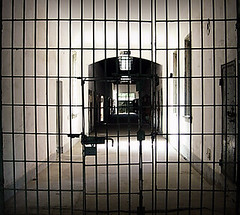If you try to stay up to date on juvenile justice issues you may well have run across the term “crossover youth.” These are the young people who have had interactions with both the child welfare and juvenile justice systems.
It is a term I welcome because it shows an increased awareness of the inextricable links between abuse and neglect in a child’s early home life (the lack of “one good enough adult” to make a difference) and delinquency later in life.
Brian Goldstein makes some great arguments for an integrated approach that addresses this relationship. As a member of the Center on Juvenile and Criminal Justice (CJCJ)‘s policy team with an expertise on political trends in criminal justice reform, he is well suited to offer commentary.
In a recent column for the Juvenile Justice Information Exchange he offered the following:
The crossover population represents a unique challenge for both the child welfare and juvenile justice systems. A 2001 study by the Vera Institute of Justice found the likelihood of detention for foster youth awaiting trial for misdemeanors or minor felonies was 10 percent higher than non-foster care youth. Moreover, they frequently suffer amid a compartmentalization of system care and oversight. For example, juveniles who make contact with the justice system may lose access to welfare services and their respective case manager, resulting in a disruption to their therapeutic services.
The long-term consequences for crossover youth are significant with many suffering higher incidence of drug use and exacerbated mental illness. The aforementioned study of LA County also found that crossover youth have a higher recidivism rate than non-crossover youth, and more than 30 percent have new maltreatment referrals following their arrest. These young people may not only commit offenses as adults, but may well perpetuate the cycle of maltreatment as parents.
There is a big picture here, one we have tried to show you in our documentary and our books. So much hangs on the experiences of early life. This is why it is important to address the causes rather than just the symptoms. Fortunately the idea of a multidisciplinary approach to these issues seems to be taking root.
At Georgetown University’s Center for Juvenile Justice Reform they have developed The Crossover Youth Practice Model, a model currently in use at 11 jurisdictions across the United States.
One of the core features of the model is to encourage multi-agency collaboration across the child welfare and juvenile justice systems. Coordinated case management and supervision encourage family engagement, which is vital. This approach helps to impede the course so many children follow between the child welfare system and the juvenile justice system. Closer to home, California’s Sierra Health Foundation has been making similar multidisciplinary strides at the county level through their Positive Youth Justice Initiative.
This is not a buzzword. It is an idea that needs more attention.
;











